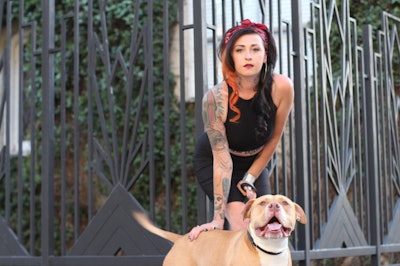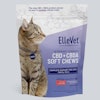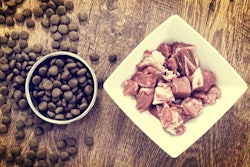
Total spending on pets in the US reached US$66.75 billion in 2016, a US$6 billion increase over 2015, the American Pet Products Association (APPA) announced during Global Pet Expo 2017. Pet food accounted for much of the increase, up more than US$5 billion, or 22.5 percent, from US$23.05 in 2015 to US$28.23 in 2016. However, much of the increase is due to APPA adjusting its data to reflect that from the US Bureau of Labor Statistics; actual growth was about 4 percent, said Bob Vetere, president and CEO of APPA.
(Note that the APPA US pet food figure is still a little lower than the amount from other sources. Packaged Facts, for example, put US pet food sales at a little more than US$30 billion for 2016.)
During the show, APPA also released its 2017-2018 National Pet Owners Survey, which showed pet ownership has risen to 68 percent of US households as of 2016, up from 65 percent in 2014 (the last time APPA conducted this survey). Not surprisingly, dog ownership is highest, at 48 percent (up from 44 percent), while cat ownership has also increased, up to 38 percent from 35 percent in 2014.
Ownership of other species measured – freshwater and saltwater fish, birds, small animals, reptiles and horses – is much lower and fairly flat in relation to previous years. (Freshwater fish is the only other type of pet that reaches double digits in ownership, at 10 percent.)
Pet food predominates, now and in future
According to APPA’s spending report, pet food accounted for 42 percent of all US pet industry spending and is projected to grow another 5.2 percent in 2017, to US$29.69 billion. For comparison, veterinary care was the second largest category, reaching US$15.95 billion (a 3.4 percent increase), with 4.2 percent growth projected for 2017. APPA’s press release said that veterinary visits did not necessarily increase, but advances in health care and services helped grow spending, along with research showing that the more pet owners become aware of the health benefits of pet ownership, the more likely they are to take better care of their pets.
While “other services” (grooming, boarding, walking, training, pet-sitting, yard services) contributed a smaller share of the overall US pet industry, at US$5.76 billion in 2016, that represented 6.5 percent growth; and APPA projects a 6.1 percent rise for this year, too. Vetere attributed this to the millennial influence: “Now that millennials have officially taken the reins as the primary demographic of pet owners, they stand to further develop the humanization of pets trend.”
Pet food still a good value
US dog and cat owners spent an average of US$235 on pet food in 2016, according to the pet owners survey. That’s actually down slightly for dog owners (US$239 in 2014) but up nearly 16 percent for cat owners (US$203 in 2014). Pet treats showed a similar pattern: Dog owners spent an average of US$72 per year, up from US$65 in 2014, while cat owners spent US$56, a whopping 55 percent increase over 2014, when it was only US$36. Perhaps this reflects the increasing focus and product development for cats by pet food companies over the past year or two?
Relative to other pet care spending in the US, pet food was higher, as would be expected, but still less than for categories such as boarding and veterinary visits (whether emergency, ill pets, surgery or even routine check-ups). That’s true for dogs, at least – for cats, spending in those categories was much lower; so apparently, not all cat owners are willing to spend at the same level for their cats, aside from food and treats.
APPA said its latest survey goes into much greater detail than in the past about different types of pet foods fed by US pet owners, such as raw, freeze-dried, limited-ingredient diets, grain free and gluten free. Unfortunately, the executive summary currently available does not provide any of that data; I hope to share an update once the full report is available.
Positive bottom line
All in all, the reports are not just positive for APPA and the overall US pet industry – record spending and pet ownership, plus a record number of booths (3,218) for the sold-out Global Pet Expo. They also mean good news for pet food: more furry mouths to feed and caring pet owners willing to spend more to feed them well.


















